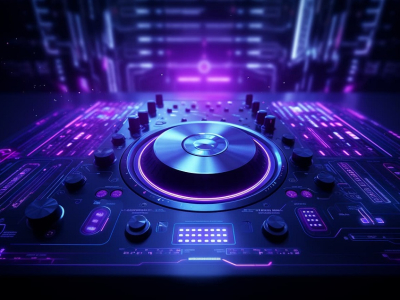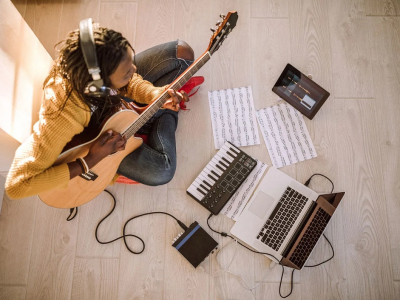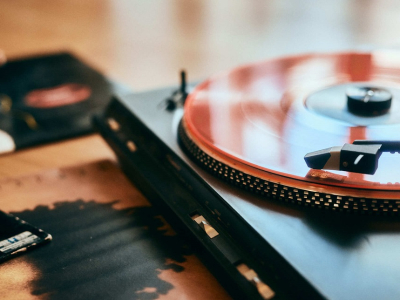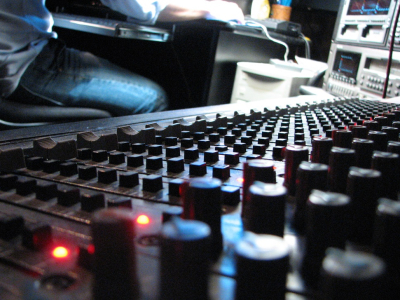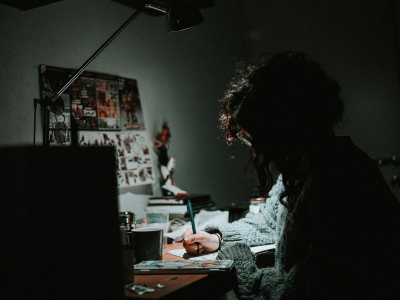Writing songs using the art of sampling is nothing new. In fact, it’s become one of the only frontiers in music that’s still ripe for innovation.
We need to talk about sampling.
Sampling is often frowned upon. Some feel that it’s recycling or even stealing — we worry about legal action and originality.
But sampling is one of the last places for growth in music.
It’s a way to cite other artists, to pay homage and to build communities across time.
This isn’t a new concept. Jazz musicians would ‘quote’ one another by borrowing riffs for their own songs. Hip Hop is built on sampling. So is House music. And so are tons of other genres these days from pop to EDM. Even the Musique Concrète pioneers of the 1950’s experimented with found sound…
So what has sampling become and where is it going? And most importantly: what role does it play today?
THERE ARE NO NEW GUITAR SOUNDS
We’ve been recording for about 156 years (since the phonautograph). That’s a long time. So after 156 years how many new ways are there to record instruments? Are there endless room shapes, mics or mic placements to make a guitar or piano recording sound new? Does it even matter?
A guitar will always sound like a guitar. A piano will always sound like a piano.
I can lock myself in a room and try and find the ‘perfect’ piano tone for the rest of my life. But those sounds are just references now. References to bygone eras, a traditional way of making music.
Don’t get me wrong I love the idea of tearing up a guitar signal with pedals and effects. And there was a time when that was the peak of experimentation. But with everything at our fingertips now, mic’ing a guitar seems limited compared to what we’re capable of with sampling.
SAMPLING AND MEMORY TRIGGER
Don’t smash your Rickenbacker just yet.
At a recent ASCAP (American Society of Composers, Authors and Publishers) panel on music production, producer Harmony Samuels detailed the thinking behind his hit song ‘The Way’. He produced and wrote it for pop star Ariana Grande.
The song references Brenda Russell’s ‘A Little Bit of Love’ (1978) which enjoyed a second life by way of sampling in ‘Still Not a Player’ by Big Pun (1998). In front of hundreds of aspiring music creators, Samuels explained the business logic behind choosing to use samples:
As a child you listen to music and it stores in your memory somewhere. Basically I was gonna sample a sample. Take a hit song and make another hit song, that came from a hit song.” – Harmony Samuels
So did Samuels reach all demographics with a twice-familiar earworm?
The song went on to sell 2.3 million copies in the United States and has reached triple platinum status. It carried with it the mixed legacies of Brenda Russell, Big Pun, Ariana Grande and perhaps more to come. It combines all those successes into a 38 year timeline that is alive and well.

WHO SAMPLED
Beyond memory, sampling is also about pleasure. It’s the pleasure of discovering a rare cut to sample, and the pleasure of recognizing it as a musicophile. Sampling other people’s music is a way to take part in a broader music community, for both the producer and the listener. It changes listening.
The website WhoSampled runs on the obsession to get the reference right. It’s about being in the loop, literally and figuratively. The pleasure of belonging. Communities formed by a genre of music (be it techno or hip hop) share a canon of music references.
In many ways samples are like hyperlinks. They link content together and end up taking you places you didn’t expect. Samples carry their musical history wherever they go.
As a sampling artist, you know what came before and where you’re gonna take it. Knowing the rule – in this case the reference – in order to better break it. It’s both an homage to the past and a step forward.
DAFT PUNK, MICRO SAMPLING AND THE RISE OF THE BEST VIDEO GAME EVER
Micro Sampling is the future of music. The micro sample is a one-shot snippet of a sound so short that the brain barely (if at all) recognizes what it is.
As the trend progresses samples get shorter and shorter, to the point where entire songs are made of tiny colorful bursts. One artist’s song takes on a new life through another’s re-envisioning. The spirit here is less citation and more misrecognition. It’s less history/past and more future.
Ableton Live’s Simpler and Sampler devices have made this process so easy that it’s almost become an instrument unto its own. In an archived interview on the Ableton blog, Thomas Bangalter of Daft Punk commented on creativity and DAWs:
Chopping and rearranging micro-samples is everywhere now. From underground projects like Oneohtrix Point Never and Sophie all the way to the EDM festival circuit. It’s also all over mainstream radio: Think Mike Posner’s ‘Took a Pill in Ibiza’ Seeb Remix or Bieber’s ‘Where are Ü Now’.
What’s interesting about sampling and micro sampling is that through production techniques like pitch shifting and changing the envelope, the artist gets to decide how much of the reference they’re willing to share with the listener.
This brings us back to the obsession of recognizing the sample. The original reference is becoming harder and harder to distinguish. We need a video that explains how the producer did it. So the real question is: If a snippet of a track ripped from YouTube gets sliced into milliseconds and twisted into new timbres and colors… Is it even a reference or something completely new?

THERE WAS ALWAYS SOMETHING BEFORE YOU
Sampling has reinvented music time and time again. From the pioneering of Hip Hop to today’s pop music. Whether it’s paying homage to another song or chopping up samples so much that they become completely new sounds, it’s all part of a timeline.
Let’s move the conversation from legal battles and theft to creativity, technology and music history. The techniques that we use to sample go hand in hand with advances in music technology and music in general.
Technology has shaped our musical creativity as much as creativity has pushed technology further.
The art of sampling is no less valid than a guitar or a piano. In fact it’s already the main instrument of many of today’s most talented and successful artists. Maybe that’s why people get so heated about it: it revolutionizes what it means to be an artist.
New art doesn’t mean starting from scratch – it’s about reinventing our existing culture.
There was always something before you. How are you going to push it further?

